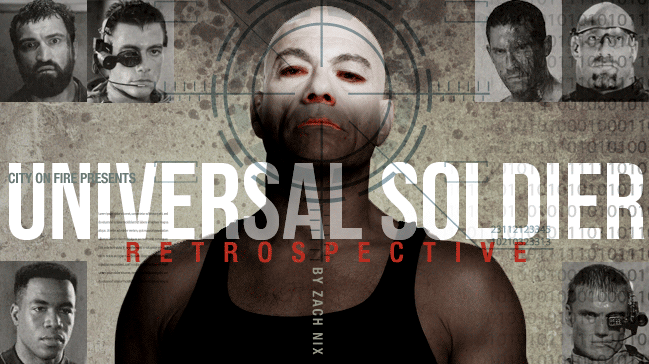 The Universal Soldier films are unique in that they blend stories about cyborg-like killers with martial arts and several of action cinema’s greatest stars. Action icons like Jean-Claude Van Damme, Dolph Lundgren, Michael Jai White, and Scott Adkins all appear throughout the franchise and leave their stamp on the Universal Soldier name. Fans of both science fiction and martial arts cinema adore these films because they blend two separate sub-genres into one strangely rewarding franchise that has actually gotten better with time.
The Universal Soldier films are unique in that they blend stories about cyborg-like killers with martial arts and several of action cinema’s greatest stars. Action icons like Jean-Claude Van Damme, Dolph Lundgren, Michael Jai White, and Scott Adkins all appear throughout the franchise and leave their stamp on the Universal Soldier name. Fans of both science fiction and martial arts cinema adore these films because they blend two separate sub-genres into one strangely rewarding franchise that has actually gotten better with time.
If one were to compare the Universal Soldier series to any other action franchise out there, than it would have to be the Highlander series. Both franchises started off with fairly successful theatrical entries that eventually led into sequels that appealed to the direct to video market and retconned previous entries’ continuity. However, the Universal Soldier series is unique in that the direct to video entries of the franchise are actually better than the theatrically released entries, a rarity in any franchise. The series is also interesting for shifting its tone over time. What started as rather dumb escapism eventually became a bleak and horrific martial arts blood fest that even explored interesting themes of identity and humanity.
It should be mentioned that this retrospective will not cover the two television/direct to video entries of the franchise, Universal Soldier II: Brothers in Arms and Universal Soldier III: Unfinished Business (same goes for The Asylum’s Universal Soldiers), as both do not feature any of the actors from the rest of the series and were not made by the series’ creators. These ‘direct to video quality’ entries are mostly disregarded by fans and not considered as part of the series’ canon either. Few action buffs have even seen these low budget turds. No offense to their place in action history, but the true Universal Soldier franchise consists of the films starring Jean-Claude Van Damme, plain and simple. Therefore, let’s dive into the rocky but consistently rewarding Universal Soldier series that proves that the direct to video market is a force to be reckoned with and that Van Damme and Dolph Lundgren have actually gotten better with time.
Universal Soldier (1992)
Roland Emmerich’s first true blockbuster is a fun but dumb start to a franchise that nobody expected to outlast its first installment. Universal Soldier is clearly a rip-off of The Terminator with its cyborg-like protagonists and chase concept. Unfortunately, Universal Soldier channels nothing more than B-movie thrills, not intellectual thematic material a-la Cameron’s own Terminator films. Emmerich and his screenwriting partner in crime Dean Devlin take what could have been a rather intelligent sci-fi/actioner and dumb it down to basics. Universal Soldier is nothing more than required viewing if only to understand the mythology of the series and nothing more. The film isn’t even the best within its own franchise even though it is the first installment. In a world where film buffs argue that the first film in a series is typically the best, Universal Soldier joins the ranks of Friday the 13th as being a lackluster start in a franchise that would only get better.
Universal Soldier starts off with a rather excellent prologue that sets the stage for the rest of the film. The year is 1969 and the Vietnam War is in full bloom. When Private Luc Deveraux (Jean Claude Van Damme) discovers that his superior Sergeant Andrew Scott (Dolph Lundgren) has snapped and killed a helping of villagers, the two duke it out with one another until they both lay dead in the wet mud. When American soldiers arrive upon the scene, they bag up the two and sign them up for the Universal Soldier program. The program takes once deceased soldiers and turns them into UniSols, invincible cyborgs that go on dangerous missions for the government. UniSols are the perfect soldiers because they cannot think for themselves and do exactly as they are told.
However, both Luc and Andrew’s past memories are triggered when a reporter, Veronica (Ally Walker), sneaks onto the UniSol training ground. Andrew resorts back to his psychotic ways when he murders Veronica’s cameraman and Luc turns back into the protective soldier he used to be when he grabs Veronica and chooses to protect her from Andrew. The trio engage in a cross country chase that leaves numerous innocent bodies behind.
It’s clear that there was great potential with Universal Soldier. The film could have delivered both the entertaining action and intriguing themes of a similar master class sci-fi/actioner like The Terminator. Unfortunately, Emmerich aims straight for basic B-movie entertainment and delivers nothing more than that. Emmerich fails to elicit an iota of tension out of his chase-like proceedings or deliver a competent laugh courtesy of the film’s rather abundant assortment of jokes and annoying characters. The lead characters themselves would also be particularly forgetful if not for being played by Van Damme and Lundgren.
Universal Soldier isn’t all bad though. You could say that the film is also what Devlin and Emmerich do best: blockbuster fun. The opening Vietnam prologue and mission at Hoover Dam hold up to this day and stand as the film’s standout set pieces. Van Damme and Lundgren also get to show off their action chops with numerous car chases, fist fights, and shootouts. Universal Soldier is more or less a ‘versus’ film between Van Damme and Lundgren where the two chase one another across the country and duke it out several times. While far from exciting, Universal Soldier is a unique relic of 90s cinema where two action stars shared screen time and top billing with one another. The action stars of the 80s and 90s were all about competition. This is why you never saw any of them on screen together until Stallone’s The Expendables. Therefore, Universal Soldier is worth checking out in order to see two of action cinema’s biggest stars acting alongside one another all the way back in 1992.
If B-movie entertainment is what you seek, than Universal Soldier is the film for you. Van Damme and Lundgren fans will definitely want to check this film out for their fun performances and entertaining action sequences. Otherwise, the first Universal Soldier film does nothing more than establish the mythos of an ever complex franchise and force the audience through an hour and a half of bad comedy courtesy of Ally Walker’s gaping jaw. Unfortunately, the franchise would only get worse with its first sequel.
Universal Soldier: The Return (1999)
Universal Soldier: The Return is the low point of the franchise, an abomination of action cinema if there ever was one. Mic Rodger’s ham fisted film is nothing more than a lazy sequel meant to cash in on the original’s success and Van Damme’s marque name. Univeral Soldier: The Return is so bad that it more or less killed the franchise until direct to video master John Hyams “regenerated” the franchise in 2009 with one of the best direct to video sequels of all time.
Universal Soldier: The Return opens with an action scene within the first few minutes and more or less establishes the tone for the rest of the picture. If you thought that Universal Soldier was too comedic or dumb, than prepare yourself for a camp fest. Universal Soldier: The Return dives head first into sexist jokes, dumb action, and forced romance within minutes and tortures the viewer with these atrocities until the very end. The film barely constitutes as a sequel, as Luc Deveraux returns as a soldier working for the government, but no longer with the defects of a UniSol. He’s a cured man now with a daughter and a job to attend too. When the UniSol program is shut down due to budget cuts, the artificial intelligence program that runs the facility takes matters into its own hands and uses the UniSols to take over. This A.I. eventually takes the form of a man named Seth (Michael Jai White) and gives Deveraux a physical opponent to best. Therefore, Deveraux must help the military shut down the UniSol program and stop Seth.
Universal Soldier: The Return barely has a plot. The film was more or less an excuse to get Van Damme back in the shoes of Deveraux in order to kick some ass and shoot some UniSols. The sequel even borrows its rogue A.I. plot from none other than 2001: A Space Odyssey. The film goes so far as to recreate the infamous scene of HAL-9000 reading the lips of two men when Seth reads the lips of two military officers through a window. Both scenes are shockingly similar to the point where Universal Soldier: The Return’s “borrowing” of the material seems down right criminal. One should not even mention 2001: A Space Odyssey and Universal Soldier: The Return within the same sentence, it’s just wrong.
That Rodger’s sequel was made for $45 million astounds me. This crappy film features the terrible acting abilities, awful special effects, and nonsensical plotting of a television movie, not a theatrically released sequel. The sound design, cinematography, and score are especially bad too. Your eyes and ears will hurt from watching this hazy and cheap looking sequel that dares to compare itself to Emmerich’s competent sci-fi/actioner. Say what you want about the first film, but at least it had good cinematography. Universal Soldier: The Return also cements its action and plot amongst three sets: a military facility, a hospital, and a strip club. Get used to those gray walls and bland sets, cause they are all you are going to get for a thankfully short run time of 83 minutes.
The action scenes in Universal Soldier: The Return barely amount to an R rating or excite the viewer either. Bland shootouts between Van Damme and nameless UniSols, as well as average fistfights between UniSol Romeo (Bill Goldberg) and buff nurses, do nothing more than pad out the running time. In fact, nearly all of Goldberg’s action sequences will make you laugh out loud, as they feature an odd amount of accidental comedy that director Mic Rodgers had to be idiotic not to pick up on. The only fight scene in the film that truly dazzles is the final showdown between Van Damme and Michael Jai White. The two beat up one another, hurl themselves through glass, and utilize chairs as weapons in the film’s only memorable physical bout. Unfortunately, this awesome final fight isn’t enough to save a film that already features awful ADR and a scene where a character rides Bill Goldberg down a staircase as a surfboard.
With Dolph Lundgren out of the picture and Van Damme grasping onto some of the worst material in his career, Universal Soldier: The Return barely constitutes as a Universal Soldier film. The memorable and psychotic Andrew Scott is all but absent and Luc Deveraux is barely the same character as seen within the first film. The film might as well be called Universal Soldier: Jean Claude Returns, as he is the only true returning element of the previous film. As far as sequels come, Universal Soldier: The Return may just be one of the very worst. It is nothing more than a cheap cash crab that somehow features a shocking $45 million budget. Those in search of a good laugh should check out this horrendous sequel. Otherwise, skip this franchise killing film and jump ahead to the next one.
Universal Soldier: Regeneration (2009)
After one particularly average entry and one horrendous sequel, the Universal Soldier franchise seemed officially dead and beyond repair. However, director John Hyams and screenwriter Victor Ostrovsky saw different when they revived the franchise in 2009 with Universal Soldier: Regeneration, a direct to video sequel (in the United States) that also rebooted the series. Universal Soldier: Regeneration rebooted the franchise by building off the mythology established in the original film while wisely ignoring the events of Universal Soldier: The Return altogether. Hyams also stripped the franchise of its hokey humor and popcorn elements in favor of a serious tone and brutally realistic fight sequences. In doing so, Hyams crafted one of the best entries in the series.
A group of political activists kidnap the Ukrainian prime minster’s son and daughter in exchange for the release of imprisoned political activists. If their demands are not met, than the activists will detonate an abandoned Chernobyl power planet in 72 hours. U.S. forces team up with the Ukrainian army in an effort to combat the political activists many numbers as well as their secret weapon, a sole Next Generation Universal Soldier, or, N.G.U. (Anrdei Arlovski). When the U.S. army’s forces and own UniSols fail to defeat the N.G.U., the U.S. army reactivates former UniSol Luc Deveraux in an effort to stop the activists from activating the bomb.
Universal Soldier: Regeneration excels where previous Universal Soldier films failed by exploring themes of identity and humanity amidst the Universal Soldier program. The film conveys the dangers of trying to control soldiers and the effect it has on their humanity and personality. When the film opens on Deveraux, we find him undergoing a rehabilitation program that aims to restore him as a normal member of society. However, all of Deveraux’s rehabilitation is ruined when the U.S. army makes the decision to remove his humanity altogether and turn him into an unstoppable soldier again. The film is truly a tragic and depressing look at the effects of creating the perfect soldier, as well as a harrowing warning of said effects. Look towards the next sequel for more on this.
Hyams’ first Universal Soldier film is also an improvement in the action department thanks to a helping of brutally realistic fight choreography and incredible camera work. Andrei Arlovski’s many fight scenes benefit from the actor’s experience in mixed martial arts. The fights feel like actual brawls to the death this go around instead of flashy bouts of popcorn entertainment. Even Van Damme and Lundgren’s long awaited rematch since their final fight at the end of Universal Soldier trumps nearly every fight the two have engaged in amongst their lengthy careers. All of this bone crunching action is made all the better thanks to the camera work by Peter Hyams, John’s father who had previously directed Van Damme in Time Cop and Sudden Death.
John and Peter take a page out of Alfonso Cuaron’s filmmaking handbook by incorporating long tracking shots and smooth camera movements that convey an incredible sense of fluidity during the film’s many action sequences. The film’s gorgeous cinematography shines the best during an incredible single shot where Van Damme runs through a house and guns down various political activists left and right. Peter Hyams gives even John Woo’s tracking shot from Hard Boiled a run for its money. Hyams crafts an incredible finale filled with shootouts and numerous physical bouts that drive Universal Soldier: Regeneration home as one of the best action films of the previous decade.
If one were to fault Hyams’ otherwise excellent direct to video sequel on anything, than it would have to be that the film suffers from having no clearly defined protagonist. Even though Van Damme returns as Deveraux, he doesn’t appear until 20 minutes into the film’s run time and only has a couple more scenes until he dives head first into the film’s action packed finale. Arlovski more or less dominates the first half of the film until he vanishes and Mike Pyle steps in to steal the show during the second half. With so many characters taking center stage throughout the film, it’s hard to place one as the clear protagonist, even Van Damme’s respective franchise character.
Universal Soldier: Regeneration is a brutal but restrained sequel that reboots the franchise to greatness and establishes John Hyams as its auteur. John and his father direct and frame several incredible fistfights that stand as some of the genre’s very best. Hyams also directs newcomer Arlovski to great effect with a Terminator-esque performance of silence and sheer horror. Van Damme, Arlovski, Pyle, and even Lundgren shine bright in this unforgettable film that establishes the Universal Soldier series as one of action cinema’s secret treasures.
Universal Soldier: Day of Reckoning (2012)
Hyams’ second sequel within the series is a daring, artistic, and complex film that barely resembles its refreshing predecessor. Universal Soldier: Day of Reckoning takes the franchise in an increasingly complex and animalistic direction as it explore themes of reality and humanity amongst a plot that places action star Scott Adkins (Close Range) in the spotlight as the franchise’s newest hero.
The fourth Universal Soldier film immediately pulls a switcheroo on the viewer by turning its franchise hero, Luc Deveraux, into a psychotic villain. The film opens as John (Scott Adkins), a husband and father, watches his family murdered before his eyes by a trio of masked men led by Deveraux. When John awakens from a coma several months later, he sets out to uncover why Deveraux murdered his family. He soon discovers that his sense of reality is not as he believes and that he may be a pawn in a larger game involving the Universal Soldiers and the government that controls them.
Whereas Universal Soldier: Regeneration was simplistic and straightforward, Universal Soldier: Day of Reckoning is anything but. Hyams crafts a radically different sequel that combines the hard-hitting elements of the previous film with the stylistic tendencies of extreme foreign art house pictures. Neon and fluorescent lights decorate many of the film’s sets and recall the neon-tinged films of Nicolas Winding Refn (Drive, Only God Forgives). The film also features several first person point of view shots complete with blinking eye effects for maximum immersion. The occasional POV shots, along with several scenes that feature near headache inducing strobe lights, mirror the filmmaking techniques of Gaspar Noe (Irreversible, Enter the Void). It’s clear that Hyams pulls inspiration from varied filmmakers for each of his Universal Soldier films.
Universal Soldier: Day of Reckoning may fend off viewers who are uncomfortable with such extreme techniques and gory violence. Hyams takes the fourth film in such a dark and extreme direction at times that the film feels like it has crossed over into the horror genre. In fact, the film is so violent that it feels primal and animalistic in tone, especially during the scenes that take place within the UniSol compound. There is no denying that Universal Soldier: Day of Reckoning joins the ranks of Rambo, Punisher: War Zone, and The Raid 2 as one of the most violent action films in recent years.
Adkins gives a great performance as a confused and confounded man who questions his own reality. The character of John, and his subsequent adventure, mirror Douglas Quaid’s plight in Total Recall. Franchise veterans Van Damme and Lundgren are reduced to particularly small supporting roles. While viewers may be familiar with Lundgren’s insane antics over the course of the franchise, some may be caught off guard by Van Damme’s rather dark performance as a corrupted Deveraux. Van Damme’s bald appearance and performance recall Marlon Brandon’s infamous turn as Colonel Kurtz in the classic war film Apocalypse Now. In fact, Deveraux’s journey from decorated soldier to insane leader is incredibly similar to Kurtz’s own fall from grace. Both men’s journeys show the harrowing effects of war on its soldiers. Arlovski also returns, now referred to as “The Plumber”, in a supporting role that pits him against Adkins throughout the first half of the film.
Hyams ups the action ante from the previous film with numerous one on one fights and one of the goriest action finales in recent memory. Both of Adkins’ fights against Arlovski excel due to their hard-hitting choreography and lack of music. Their fast paced fights stand out the most because they differ from the rest of the film’s highly stylized fights that incorporate copious amounts of slow motion, tracking shots, and sped up footage. The film’s entire finale feels reminiscent of a video game as Adkins makes his way through several UniSol henchmen, a mini-boss in the form of Dolph Lundgren, and than the long awaited final bout against Van Damme. Few action films contain as brutal a display of violence as Universal Soldier: Day of Reckoning.
Whether Universal Soldier: Day of Reckoning ends up being the final entry in the franchise or simply the latest remains to be seen. Either way, it’s clear that Hyams is the franchise’s defining author and the one who should be writing, producing, or directing all future entries. Hyams took the franchise in a new direction with this brutal entry of the series that exudes art house horror and animalistic fervor. Universal Soldier: Day of Reckoning is an action film that must be seen if only to experience its raw energy and jaw dropping action sequences. Adkins’ one on one fights with Arlovski, Lundgren, and Van Damme are worth the price of admission alone. If anything, Hyams has successfully passed the franchise torch from Lundgren and Van Damme to newcomer Adkins.
Conclusion:
The Universal Soldier franchise is a unique gem of action and science fiction cinema. The series started out with Universal Soldier, an overly humorous but entertaining summer blockbuster that felt more like a one-off film than the start of a franchise. However, Van Damme desperately needed a comeback in the late 90s. Therefore, he pulled the sequel card and starred in Universal Soldier: The Return, one of his biggest budgeted action films at the time. Unfortunately, the film was nothing but a disaster. It was an insult to the series, a financial flop, and critically reviled. It stands to this day as one of the very worst films in all of Van Damme’s filmography.

Fortunately, John Hyams resurrected the series in 2009 with Universal Soldier: Regeneration, one of the hardest hitting and simplistic reboots to date. Hyams followed up his reboot with the increasingly complex and diverse Universal Soldier: Day of Reckoning, a fascinating and dark science fiction film. Both of Hyams’ sequels also gave Van Damme and Lundgren a second chance at redeeming the franchise. Hyam’s sequels more or less stand as the series’ definitive entries thanks to their penchant for brutal action, engaging stories, and interesting themes of identity and reality. Few franchises evolve over time and feature as diverse a selection of sequels as the Universal Soldier series. Therefore, count me in for whatever direction the series heads towards next.

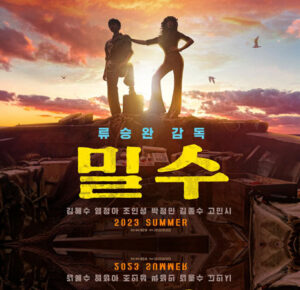




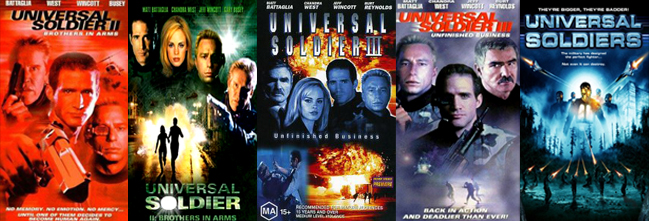
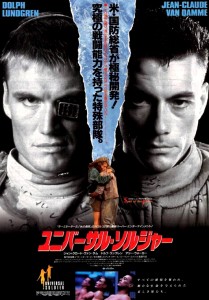
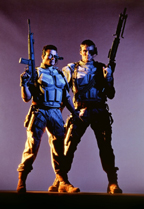
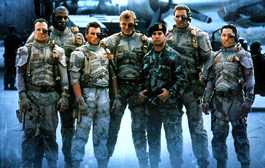
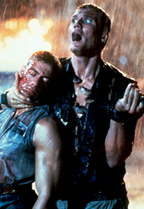
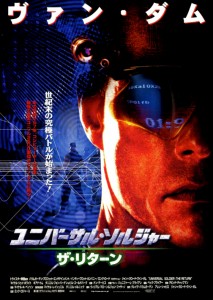
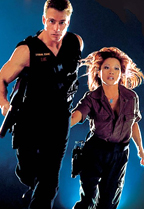
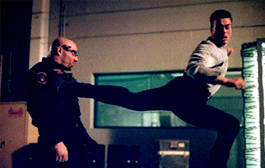
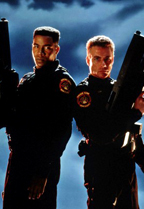
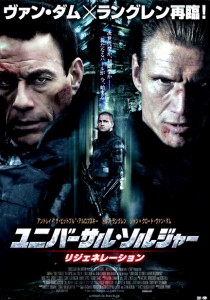
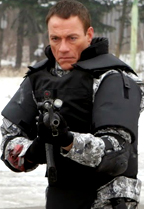
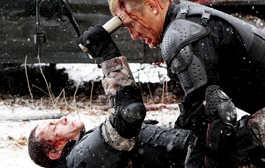
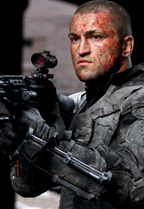
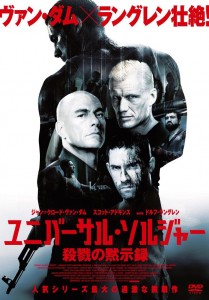
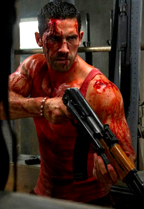
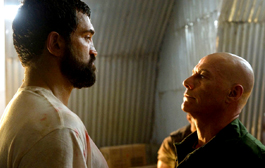
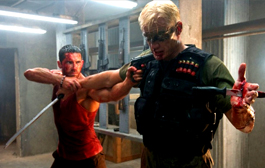
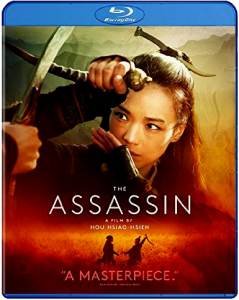
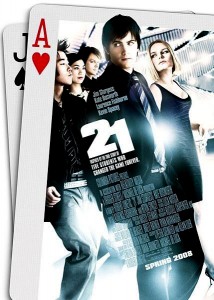
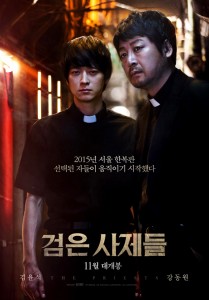
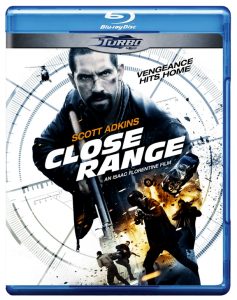









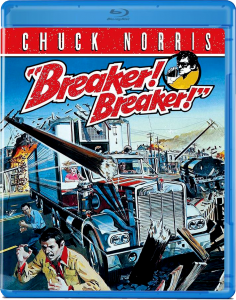
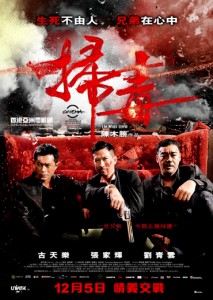
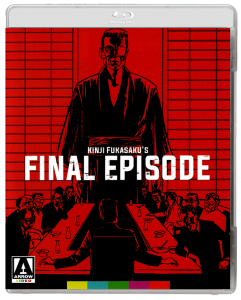
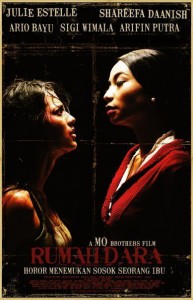
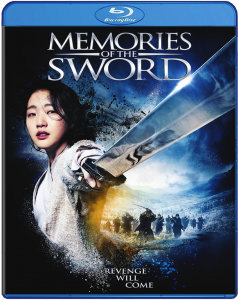
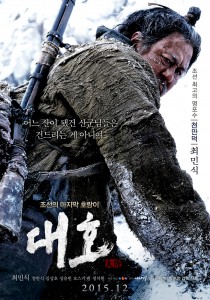
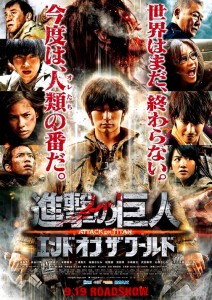

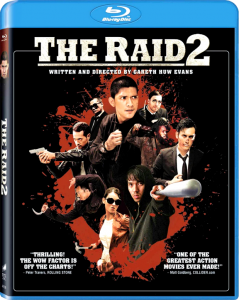




13 Comments